Squid Game may be the most watched and popular K-drama on Netflix, but it has its predecessors to thank for paving the way.
Ever since the pandemic hit, more and more people use their time to consume content on many streaming platforms, such as Netflix, Disney Plus, or Amazon Prime. For those who are tired of watching the same tropes repeated on western series, which often times have multiple seasons and hundreds episodes, Korean dramas offer a refreshing and different take that can be quite addicting. In 2021 alone, Netflix released more than 20 K-dramas on its platform, and many managed to top the chart worldwide, with Squid Game, easily the most watched and viral series last year, securing the #1 spot. The main question is then, why do the general public, who are not even fans of K-pop or K-cultures, find many Korean series appealing?
Fast-paced story, keeping you at the edge of your seat.
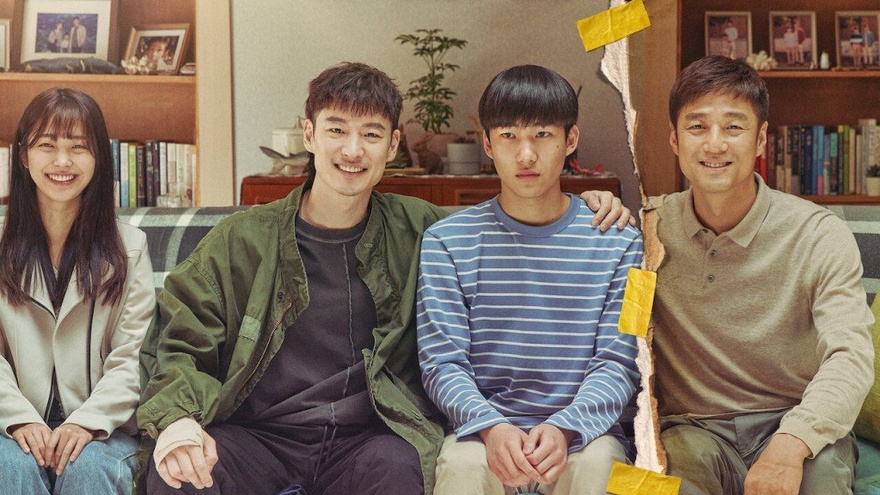 |
| Move To Heaven - A Netflix original with only 10 episodes |
A majority of K-dramas wraps up in 16 episodes -- sometimes 20 -- and only has 1 season. This makes it possible for those with commitment issues (or just time-constrained) to stay glued to the story as they can see the finish line. Some, like Squid Game, Move To Heaven, or The Silent Sea, end in 10 episodes or fewer. With each episode not exceeding 2 hours, K-dramas do not demand too much of our time and attention. Fewer episodes also mean that the story doesn't drag, and the plot moves fairly quickly. For romantic comedy, the two main characters normally fall in love within the first 4 episodes and become a couple by the 6th episodes. Thrillers and crime series usually stick with similar formulas: one case/mystery solved per two episodes, while the main villain or the big boss is slowly revealed; the smaller cases serve as build ups for the climax. There are of course, fillers and plot holes even in K-dramas, but viewers who watch for entertainment normally do not mind these tiny hiccups -- they just enjoy the ride, eating popcorns and discussing conspiracy theories and their OTP (one true pairs) on twitter. I gotta admit that these days, there are more Korean dramas that continues for several seasons (The Penthouse, Kingdom, Love ft. Marriage and Divorce, and Hospital Playlist to name a few), but there are still limits to the number of episodes and seasons. Most of the time, the number of seasons and episodes have been pre-determined, so it's unlike western series that continues to be renewed as long as the demand is still high. Not answering to public's demand helps keep the stories from being stale. After all, we don't like dramas that overstay their welcome.
A bunch of eye candies, driving new inspirations for fashion and styles
 |
| IU - Hotel del Luna |
You cannot talk about k-dramas without talking about the casts. South Korea is filled with out-of-this-world visuals (have you seen the like of Song Kang, Gong Yoo, and Song Hye Kyo?). Its actors/actresses are so visually pleasing that it's impossible not to be attracted to them. Their visuals notwithstanding, they also serve some noteworthy styles that are quick to become trends all over the world. Not surprising, actually, since South Koreans care a lot about fashion. They take outfits seriously, whether it's just a regular work day, airport fashion, or a big night out. When it comes to K-dramas, they take fashion and wardrobe to the next level. Watching Park Min Young in Her Private Life, IU in Hotel del Luna, or Seo Ye Ji in It's Okay To Not Be Okay, you can't help but feel like you're on the front rows of Paris Fashion Week (or Seoul Fashion Week it is). Many viewers end up copying the styles of the artists they see on dramas from head to toe; there are even many instagram accounts dedicated to dissecting outfits in these dramas, breaking down the brands, prices, and places to get the pieces.
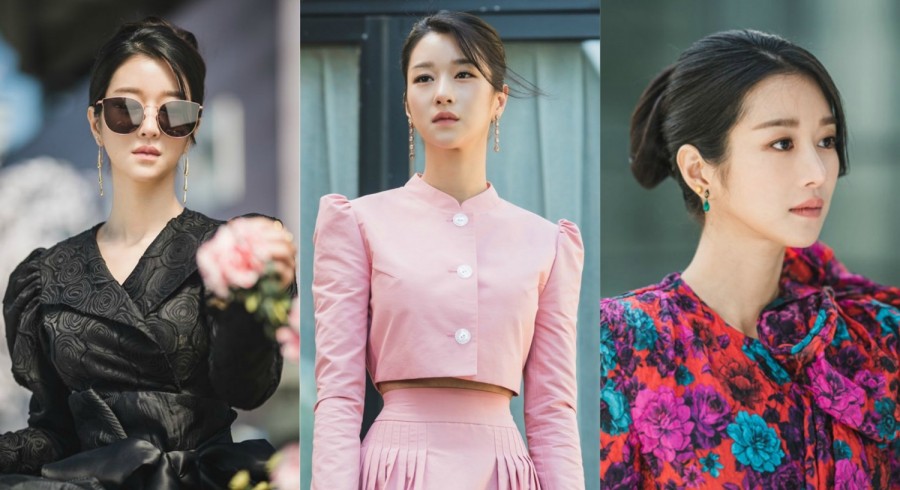 |
| Seo Ye Ji - It's Okay To Not Be Okay |
Huge budgets + impressive acting + scenic cinematography = movie-like experience |
| Our Beloved Summer - Netflix |
For TV series, Korean dramas somehow deliver movie-like qualities: many of them have huge budgets to utilize, hire the best composers and singers for the soundtracks, and they don't play around with special effects or animation. Squid Game, for instance, received roughly $21 million from Netflix, though surprisingly it was only half of what Arthdal Chronicles -- another Netflix K-drama staring Song Joong Ki-- spent: $44 million. The mind blowing production cost definitely results in the crew's ability to shoot in the most realistic settings, cast the most popular actors, and more. The producer of The Silent Sea, a drama about a special mission to the moon, reportedly made sure the filming set was as realistic as possible, including a recreation of the Moon's surface, a full-designed spacecraft and space station where most of the series is set in.
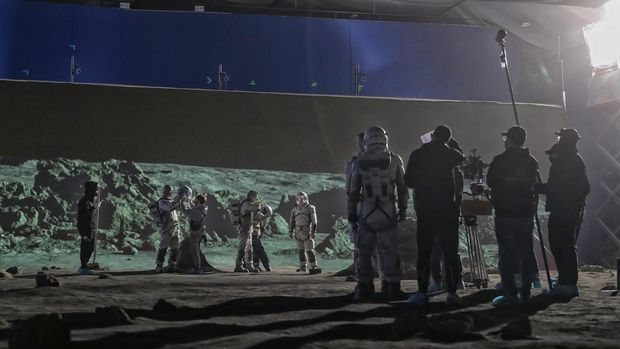 |
| Filming set of The Silent Sea |
 |
| Zombies in All Of Us Are Dead |
Don't even get me talking about the make up or special effect. If you have seen Kingdom -- the Korean's Walking Dead series -- or All Of Us Are Dead -- the latest zombie series set in high school -- you will know that their special effect make up is nothing short of amazing: the blood and the grotesque scars and puss of the zombies make your hair stands. Last year, I was pleasantly awed by the quality of animation used in Yumi's Cells, a combination of real life and 3D animation drama about the cute cells that live inside the main characters' bodies. The animation itself is as good as any anime out there.
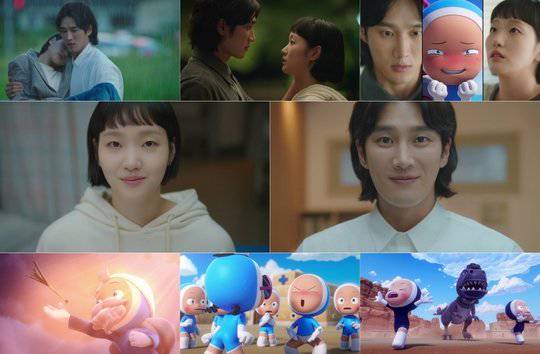 |
| The animation quality in Yumi's cells deserves a huge round of applause |
 |
| Crash Landing On You |
The camera work in many of K-dramas is also one that makes you think you're watching a full length blockbuster movie. The locations of the shooting themselves may play a crucial role as many dramas are set in the most beautiful parts of South Korea and even overseas (think Switzerland in Crash Landing on You, or Portugal and Morroco in Vagabond). Color grading is another important factor in K-dramas to set the mood of the entire series; warm-toned color palettes are used in titles like Our Beloved Summer or Hometown Cha cha cha to convey bright summer days, hopefulness, and youth; dark grungy almost monochromatic colors apparent in The Silent Sea reflect the depressing and mysterious mood surrounding the series. These different elements of cinematography result in high quality work of art that the audience really appreciates.
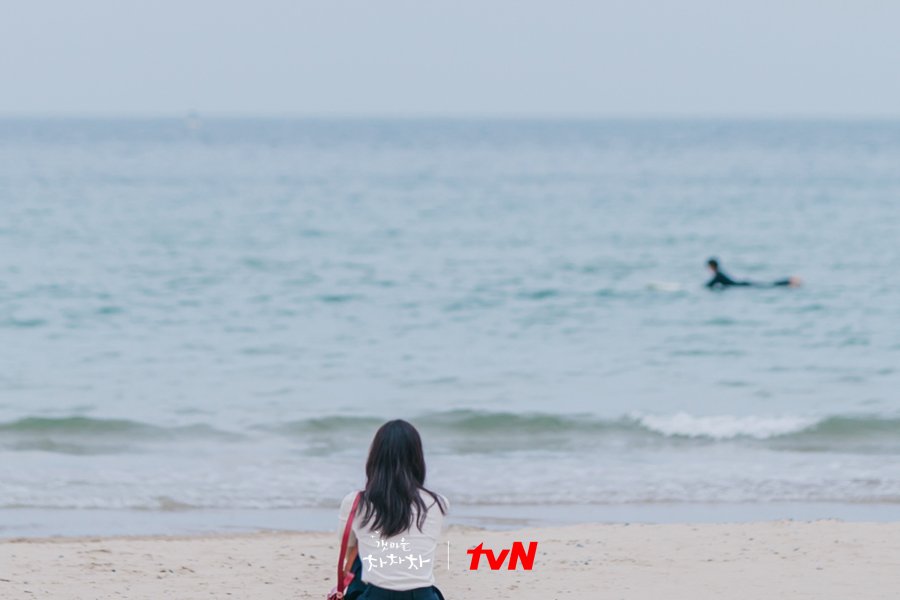 |
| Treat your eyes with beautiful scenery in Hometown Cha cha cha |
Of course, all of the afore mentioned reasons will fall short without the capacity of the actors/actresses themselves. By now we know that Korean actors can perform excellently, and their abilities are recognized even at an international level. In 2021, Yuh Jung Yeon became the first Korean actor to win an Academy Award. She received an Oscar for best supporting actress for her performance in Minari. She of course is not the only one of that caliber. Many other Korean actors possess praiseworthy acting skills; they are able to portray different characters with rich emotions that make viewers feel more immersed and invested in the story. One scene that comes to my mind is the one in Penthouse: Cheon Seo Jin (played by Kim Seo Yeon) returned to her office fully drenched after leaving her dad to die; hysterical, she played the piano emotionally as her bloody fingers smeared the keys. Her despair, frustration, hatred, and grief translate so well that we can't help but feeling a tiny hint of sympathy and a huge amount of loathe for her character. No wonder she swept many awards for her flawless antagonistic role.
 |
| The Penthouse - Cheon Seo Jin |
Wide scopes of genres explored, from the most cliche romance and heart wrenching stories to the most sensitive and borderline controversial
 |
| Misaeng beautifully captures the humdrum life of office workers |
You're wrong if you think K-dramas are all about romance or cheap modern cinderella stories. Even though there are always romcom, which again come in all kind of sizes and shapes, Korean writers and producers never hesitate to explore a myriad of genres: thriller, horrors, fantasy, slice of life, mysteries, and virtually any genre you can think of. The simplest storylines often times are the ones that tug at your heartstrings the most. Take Misaeng as an example. It tells the struggles of regular corporate workers navigating the sometimes complicated life in a company with all its office politics and competitions. There may be no great villain to defeat or a perfect happy ending to expect, but its realistic settings and relatable heartwarming stories are the ones that contribute to the drama's high ratings and accolades. This is why these days I gravitate towards simple yet impactful K-dramas-- the ones with no embellishments and specific antagonistic characters to hate, but leave your heart full (or broken) by the end of the series. My all-time favorites include Reply 1997, Reply 1988, Prison Playbook, Hospital Playlist 1 + 2, and Stove League, although I do still enjoy emotional and thrilling dramas like Signal, Hellbound, or Goblin.
 |
| Stove League, one of my all-time favorite K-drama |
Sometimes, we'll come across dramas like Squid Game that touch on societal issues like class, inequalities, capitalism, and human's greed; other times we're reminded of a dystopian future that may become possible through the like of The Silent Sea. If you think this is not enough, you can also take a glimpse of the dark side of the glamorous South Korea through series such as D.P. (which explores the bullying and violence in Korea's military), Sky Castle (which perfectly portrays Korea's obsession with education and the pressures put on students), or It's Okay to Not be Okay (which discusses mental health that's somewhat considered taboo in the country). Whether you like light hearted romantic comedy, heartwarming family dramas, total tearjerkers, stories of marital affairs and betrayals, or thrilling detective stories, you are sure to find plenty of them in the world of Korean dramas.
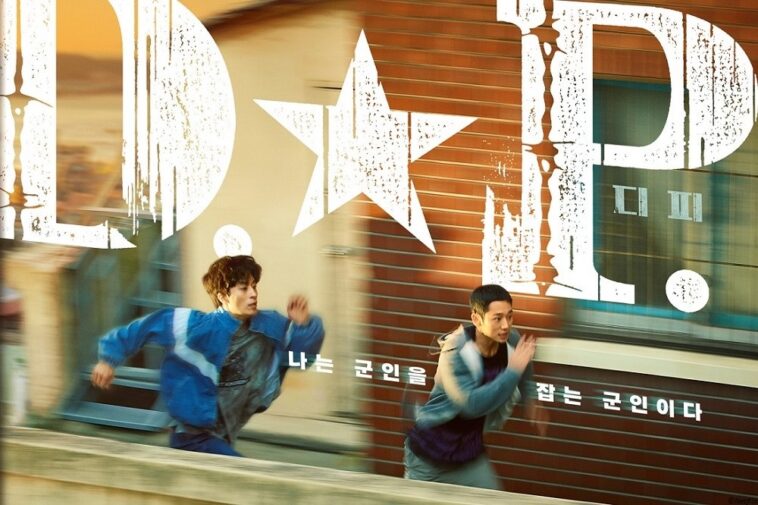 |
| D.P. - the drama that takes on bullying and violence within Korea's military |
All of those elements combined turn K-dramas into a global cultural phenomenon. They're no longer exclusives to korea boos (people who love Korea too much; derogatory in meaning), K-poppers, or just female audiences. No wonder many subscription service providers (Disney+, Netflix, Viu, etc) are racing to fund more K-dramas for their platforms. All of them want the exclusive airing rights, the biggest trendiest most popular K-stars, and they all come ready with a big bag full of cash, eager to house the most sensational and talked about series. K-dramas aren't without flaws, but if these big corporations want the next Squid Game, I'm all here for it.
 |
| Hospital Playlist - the 2 seasons medical drama that gave me withdrawal syndromes |













